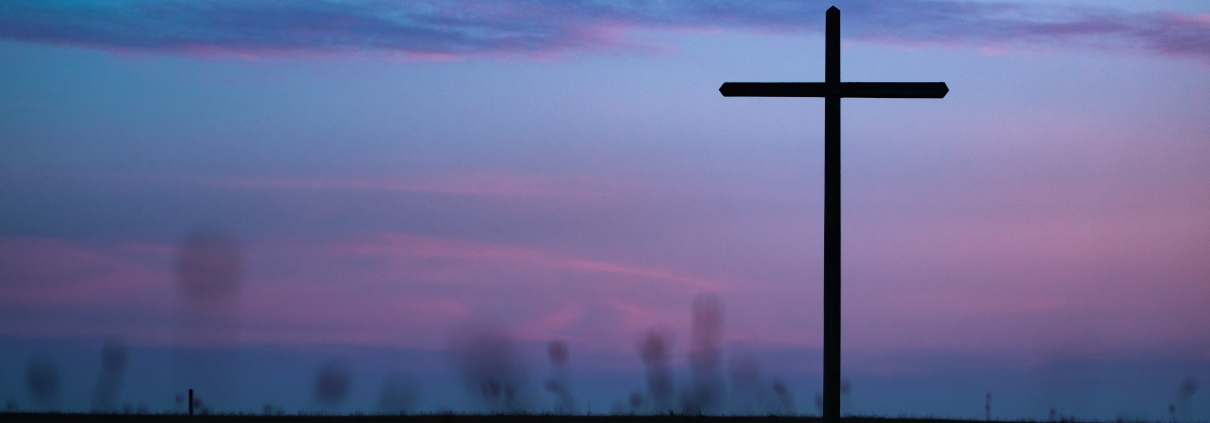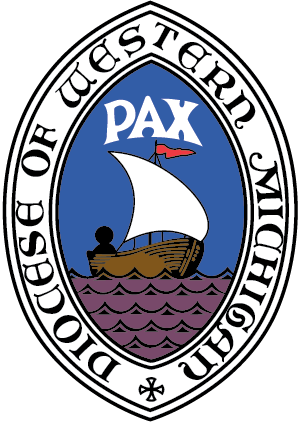Feast Days with Bishop Skip | Good Friday
What do we do with a dead Savior? Why do we focus our attention today on suffering and a torturous execution at the hands of a corrupt religious institution, a fearful politician, an erratic and deceptive local government complete with crowd hysteria, all in the midst of one of the most glorious and sophisticated empires the world has ever known?
It was Mahatma Gandhi who said, “A man who was completely innocent, offered himself as a sacrifice for the good of others, including his enemies, and became the ransom of the world. It was a perfect act.” Jesus’ self-offering was just that, a willing oblation, as he was lifted up on the tree where the whole world might see the way of perfect peace, justice and love. He did so as a gift to every human being that ever lived and ever would live.
I was never more convinced of this truth than when I was washing the clothes and bed linens of people brought into the dying and destitute home in downtown Calcutta, India. Many had horrible diseases such as cholera, dysentery, AIDS or leprosy. Most came in with lice. The cast off clothes and bed sheets that came to me were not pretty. One day, while scrubbing, pouring into the tub before me adequate amounts of disinfectant and breaking loose what had been trapped in the folds of the cloth, I felt something in my hand below the surface of the darkened water. I could not see even inches below the surface. When I brought the object to the light of day, there before me in the palm of my hand, out of the muck of Calcutta’s suffering poor, was a cheap plastic rosary. Still wet with the water of the washtub was the cross and Jesus on it, crucified. To this very day I do not know from where what happened next came, but I know I heard someone sing “Alleluia” as that image of Christ on the cross was lifted by my hand through the water’s meniscus to be gazed upon by my own eyes. I remember turning to seek the source of the sound.
I would find it difficult to believe in a God who stands aloof and indifferent to the suffering of the world. On the cross, we see that God in Christ has come right into the midst of it. On the cross, we see the sorrow of all humanity, every victim, everyone abused, every injustice committed, every betrayal. We also see every act of love, every act of forgiveness and reconciliation, every desire for peace, every justice accomplished, every truth uttered. Jesus is at the center of it all. On the cross we see in him nothing but pure, embracing compassion. Hope hangs there, exposed for all to see.
It appeared on that cross that all he proclaimed and stood for died with him. The Gospel, the Good News itself, was nailed there. In the death of Jesus it seemed that not only the medium, but the message too had been exposed as fraudulent. Yet John’s Gospel is clear that when Jesus proclaims, “It is finished,” it does not only mean that Jesus has done what he came to do, that is die. It is also an expression of victory. It means God has triumphed. We ourselves turn the mockery of the cross on its head when we dare to call this day, “Good.”
¿Qué hacemos con un Salvador que esta muerto? ¿Por qué centramos nuestra atención hoy en el sufrimiento y en una ejecución tortuosa a manos de una institución religiosa corrupta, un político temeroso, un gobierno local errático y engañoso, lleno de histeria multitudinaria, todo en medio de uno de los imperios más gloriosos y sofisticados que el mundo haya conocido?
Fue Mahatma Gandhi quien dijo: “Un hombre que era completamente inocente, se ofreció como sacrificio por el bien de los demás, incluidos sus enemigos, y se convirtió en el rescate del mundo. Fue un acto perfecto”. La ofrenda de Jesús fue precisamente eso, una oblación voluntaria, al ser elevado donde el mundo entero pudiera ver el camino de la paz, la justicia y el amor perfecto. Lo hizo como un regalo a cada ser humano que alguna vez vivió y jamás viviría.
Nunca estuve más convencido de esta verdad que cuando estaba lavando la ropa y la ropa de cama de personas traídas a la casa moribunda e indigente en el centro de Calcuta, India. Muchos padecían enfermedades horribles como el cólera, la disentería, el SIDA o la lepra. La mayoría llegaba con piojos. La ropa desechada y las sábanas que llegaban a mí no eran bonitas. Un buen día, mientras fregaba, vertiendo en la bañera delante de mí cantidades adecuadas de desinfectante y desinfectando lo que había quedado atrapado en los pliegues de la tela, sentí algo en mi mano debajo de la superficie del agua oscura. No podía ver ni siquiera unos centímetros por debajo de la superficie. Cuando saqué el objeto a la luz del día, tenía ante mí, en la palma de la mano, un rosario de plástico barato sacado de la suciedad de los pobres de Calcuta. Todavía mojada por el agua del lavadero estaba la cruz y Jesús en ella, crucificado. Hasta el día de hoy no sé de dónde vino lo que sucedió después, pero sé que escuché a alguien cantar “Aleluya” mientras esa imagen de Cristo en la cruz era levantada por mi mano a través del menisco del agua para ser contemplada por mis propios ojos. Recuerdo que me giré para buscar el origen del sonido.
Me resultaría difícil creer en un Dios que se mantiene distante e indiferente al sufrimiento del mundo. En la cruz, vemos que Dios en Cristo ha entrado justo en medio de ella. En la cruz, vemos el dolor de toda la humanidad, de cada víctima, de todos los abusados, de cada injusticia cometida, de toda traición. También vemos cada acto de amor, cada acto de perdón y reconciliación, cada deseo de paz, cada justicia consumada, toda verdad pronunciada. Jesús está en el centro de todo esto. En la cruz vemos en él nada más que pura, abrazando la compasión. La esperanza se cuelga allí, expuesta para que todos la vean.
En esa cruz pareció que todo lo que proclamó y defendió murió con él. El Evangelio, la Buena Nueva misma, se clavó ahí. Con la muerte de Jesús parecía que no sólo el medio, sino también el mensaje, habían sido expuestos como fraudulentos. Sin embargo, el Evangelio de Juan deja claro que cuando Jesús proclama: “Consumado es”, no sólo significa que Jesús ha hecho lo que vino a hacer, es decir, morir. También es una expresión de victoria. Significa que Dios ha triunfado. Nosotros mismos le damos la vuelta a la burla de la cruz cuando nos atrevemos a llamar a este día “Bueno”.




